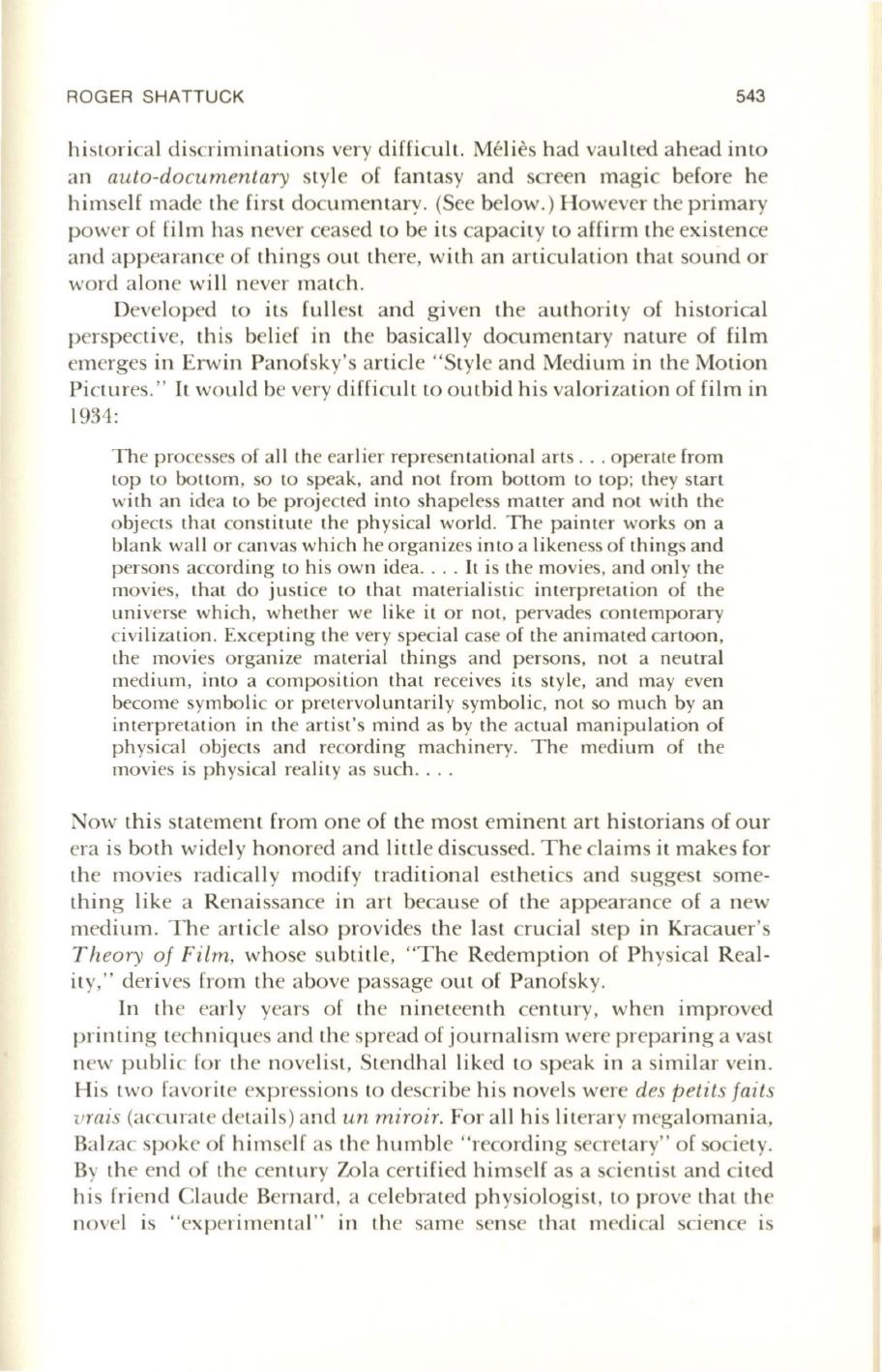
ROGER SHATTUCK
543
historical discriminations very difficult. Melies had vaulted ahead into
a n
auto-documentary
style of fantasy and screen magic before he
himself made the first documentary. (See below.) However the primary
power of film has never ceased to be its capacity
to
affirm the existence
and appearance of things out there, with an articu lation that sound or
word alone will never match.
Developed to its fullest and given the authority of historical
perspective, this belief in the basically documentary nature of film
emerges in Erwin Panofsky's article "Style and Medium in the Motion
Pictures."
It
would be very difficult to outbid his valorization of film in
1934:
The processes of all the earlier representational arts ... operate from
LOp LO bOllom, so to speak, and not from bOllom to top; they start
with an idea to be proj ected inLO shapeless maller and not with the
objects that constitute the physical world. The painter works on a
blank wall or canvas which he organizes into a likeness of things and
persons according to his own idea....
It
is the movies, and on ly the
movies, that do justice to that materialistic interpretation of the
universe which, whether we like it or not, pervades contemporary
civilization. Excepting the very special case of the animated cartoon,
the movies organize material things and persons, not a neutral
medium, into a composition that receives its sty le, and may even
become symbolic or pretervoluntarily symbolic, not so much by an
interpretation in the artist's mind as by the actual manipulation of
physical objects and recording machinery. The medium of the
movi es is physical reality as such. ...
Now this statement from one of the most eminent art historians of our
era is both widely honored and little discussed. The claims it makes for
the movies radically modify traditional esthetics and suggest some–
thing like a Renaissance in art because of the appearance of a new
medium. The article a lso provides the last crucial step in Kracauer's
Theory of Film,
whose subtitle, "The Redemption of Physical Real–
ity," derives from the above passage out of Panofsky.
In the early years of the nineteenth century, when improved
printing techniques and the spread of journalism were preparing a vast
n ew public for the novelist, Stendhal liked to speak in a similar vein.
His two favorite expressions to describe his novels were
des petits faits
vrais
(accurate details) and
un miroir.
For a ll his literary megalomania,
Balzac spoke of himself as the humble "recording secretary" of society.
By the end of the century lola certified himself as a scientist and cited
his friend Claude Bernard, a celebrated physiologist,
to
prove that the
novel is "exper imental " in the same sense that medical science is


